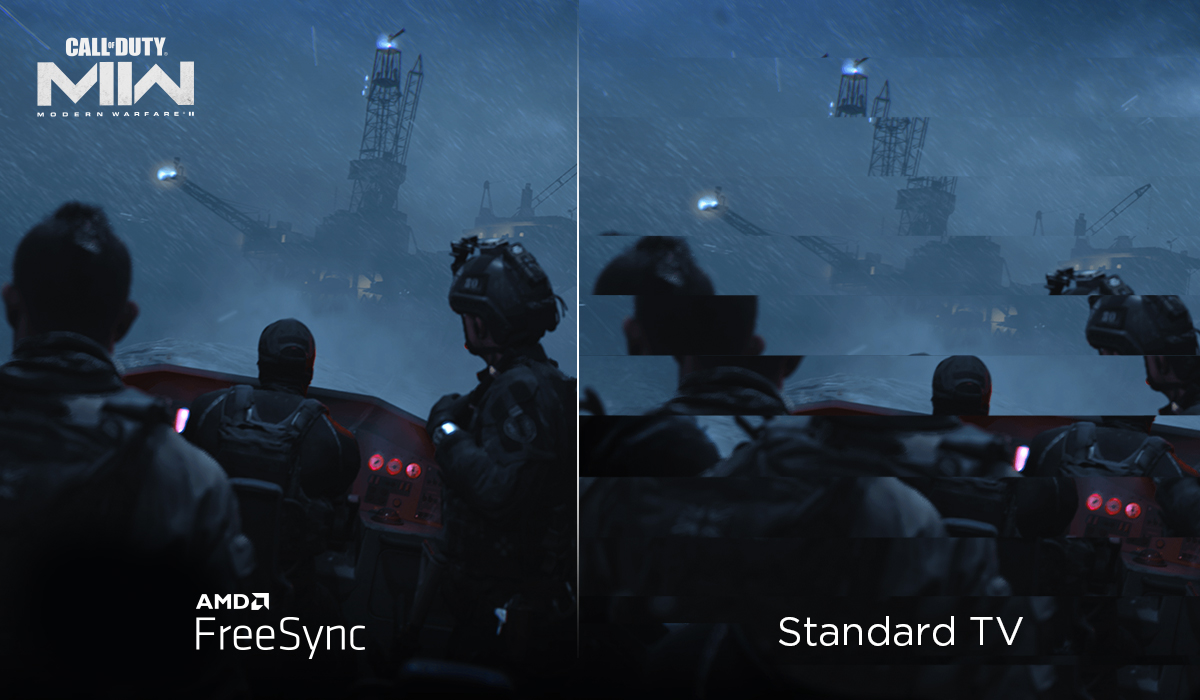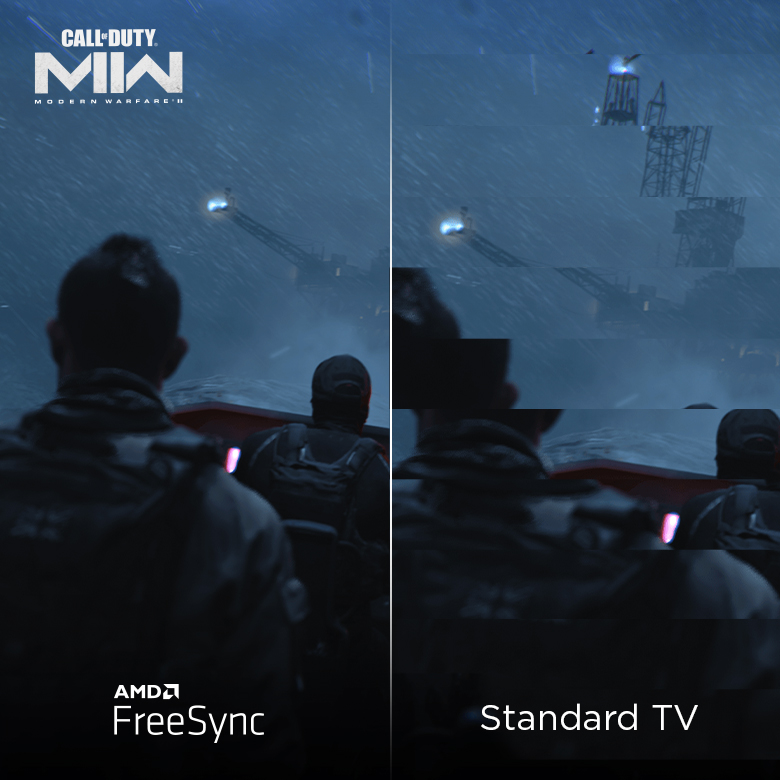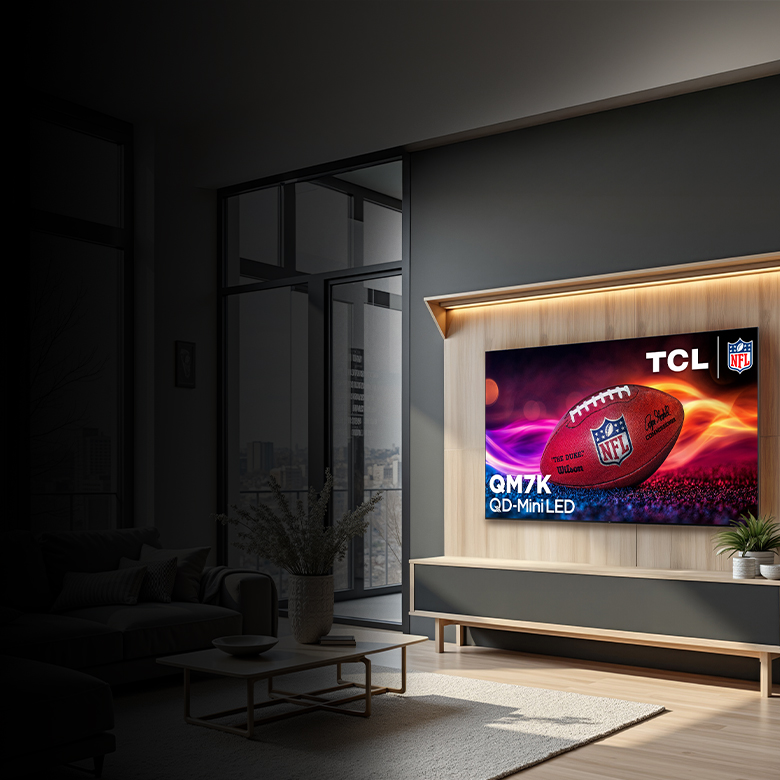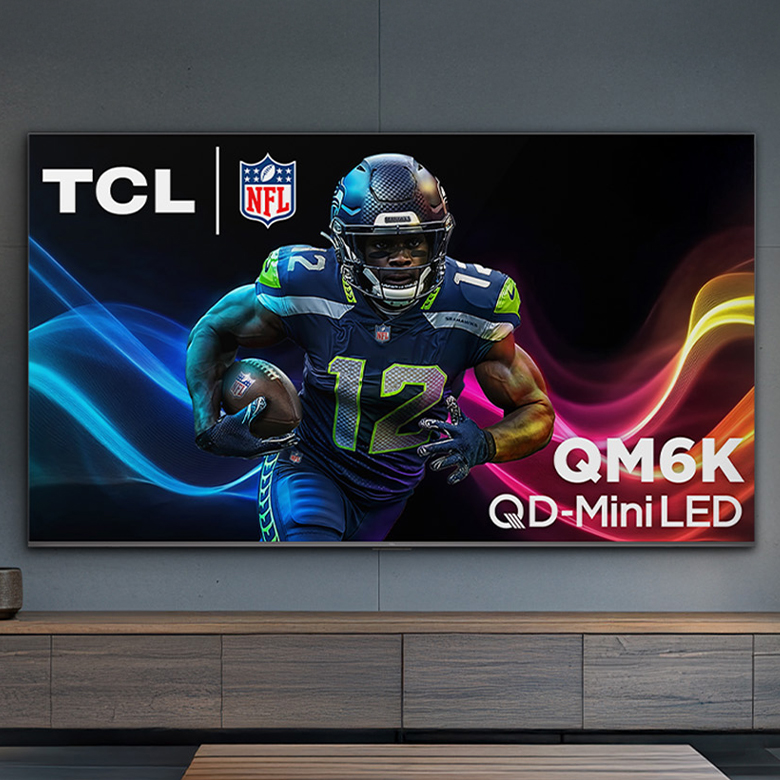I love that many gamers have chosen to move from a small-screen gaming experience and embraced the enjoyment of immersive gameplay on the BIG screen.
This group of users is not only passionate, but very committed to getting the best gaming experience they can, whether it’s the fastest lap, highest score, or PR on their latest campaign.
At TCL, we are proud to be the official TV of Call of Duty® (who's ready for Call of Duty: Modern Warfare II?!). This fact shows that gamers have embraced TCL as the go-to brand for the best gaming experience.
What I like most about gamers is that these users demand the best, and therefore push us at TCL to continually raise the bar for our TV performance. In the past several years our TVs have gone from good for gaming to some of the best reviewed gaming TVs on the market. In many cases, they even rival the performance of the dedicated gaming monitors they are replacing!
Next-Gen Gaming TV
Our engineers strive to deliver world-class performance with an amazingly low input lag, and cutting-edge features like Auto Game Mode and 144Hz VRR, and more.
One of the most anticipated features we have recently rolled out on our TVs with Game Studio PlusTM and Game Studio ProTM TVs is Variable Refresh Rate or VRR.
Let’s take a look at this great feature, its different versions, and what it can to improve your gaming experience.
Adapting to Your Play
Understanding this feature starts with understanding frame rates (or refresh rates). There are two relevant frame rates: The frame rate of the display, or how many images per second it shows on screen, and the frame rate of the source (how many images per second are being sent to the display). Normally TV shows are 30 or 60 frames per second (often shown as 30Hz or 60Hz), movies are often 24 frames per second (24Hz). Displays have ways to handle the incoming signal whether their fixed refresh rate is 60Hz or 120Hz (a blog post for another time!)
Things get interesting when gamers join the party! Like nearly everything in our lives now, Variable Refresh Rate started in the world of computing. In 2014, VESA (an international organization that sets standards for a variety of electronics, including the VESA mounting pattern on the back of your TV) added adaptive sync to the DisplayPort (basically the PC version of HDMI) for the world of PC gaming to take advantage of. This allowed a game to output its signal to a display with a dynamically changing refresh rate.
The problem arises when a game that’s running sends out varying refresh rates to a display with a set refresh rate. The dynamic change in refresh rate results in some pretty jarring visual bugs, namely tearing.


Now that PCs can output varying refresh rates, gaming monitor manufacturers can build displays that can see those changing refresh rates, adjust their refresh rate accordingly, and you are back to gaming bliss!
Smoother Gameplay with VRR
The open standard of variable refresh rate gets even more exciting when we talk about next-gen game consoles and graphics cards. AMD makes some of the highest performance graphics processors out there, including the processor in the Xbox Series X.
AMD introduced FreeSyncTM, a certification program ensures the best gaming performance. The top tier not only includes Variable Refresh Rate, but also ensures the TV has features like:
- Support for High Dynamic Range (HDR)
- At least 120Hz refresh rate
- Low frame rate compensation
- And guarantees a tear-free, low flicker performance with low latency in both SDR and HDR
The exciting new 6-Series Mini-LED TV is FreeSyncTM Premium Pro certified, AMD’s top tier of certification. Being FreeSync Premium Pro certified is basically the gold stamp of approval ensuring you get the best gaming experience with devices like the Xbox Series X (while playing Call of Duty®, I assume)!
“But why even do this,” you may ask? Why bother changing refresh rates at all?
A great question, and it comes down to the decisions game creators make when creating their worlds. Game designers develop amazingly intricate scenarios to help you get immersed in the worlds they create. Different parts of these worlds need to look and feel differently to keep you immersed, and in the right mood.
An amazingly action-packed battle campaign can “play better” when being rendered at 144Hz, for buttery smooth, yet blisteringly fast gameplay. After finishing that part of the campaign, maybe you venture off to explore, and experience more detail with a cinematic feel. You accomplish this with a lower frame rate. Remember in the beginning when I wrote that most movies are 24Hz? It’s come full circle now!
We proudly listen to listen to our users and add features that will enhance their favorite entertainment, especially gaming. TCL’s latest TVs, from the low input lag of the 4-Series, to added Auto Game Mode and VRR on the 5-Series, to our new award-winning 6-Series with FreeSyncTM Premium Pro and 144Hz VRR, bring a new standard in big-screen gaming performance. Plus, these new TVs are amazing for Movies, too. Sounds like my next blog post!



share